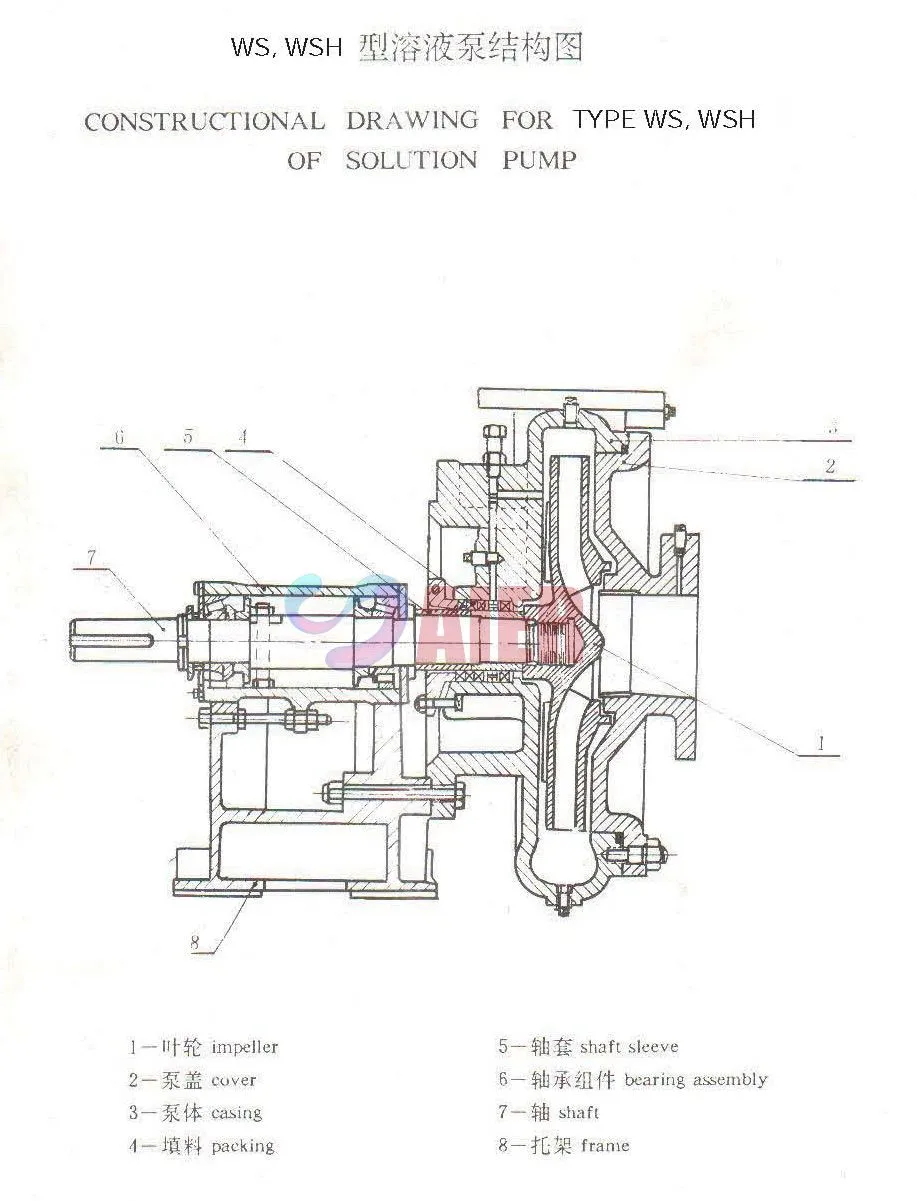Nov . 21, 2024 15:47 Back to list
mining slurry pump
Understanding Mining Slurry Pumps A Comprehensive Overview
Mining operations are often fraught with challenges, particularly when it comes to the transportation of materials through various stages of the mining process. One essential piece of equipment that addresses these challenges is the mining slurry pump. These specialized pumps play a critical role in the efficient movement of slurry—a mixture of water and solid particles—throughout a mining site.
What is a Slurry Pump?
A slurry pump is a type of pump designed to transport high-density slurries, which can include sand, gravel, and ore mixed with water. Unlike standard pumps that handle clean water, slurry pumps must contend with abrasive particles that can wear down conventional pump components quickly. Therefore, they are built to be more robust, often incorporating materials such as hardened steel or rubber to withstand the erosive qualities of the materials they handle.
Functionality and Design
Mining slurry pumps can be broadly classified into two categories centrifugal and positive displacement pumps. Centrifugal pumps operate by converting rotational energy from a motor into hydrodynamic energy, allowing them to move large volumes of slurry at a given pressure. These pumps are efficient for continuous operations, making them well-suited for transporting slurries over considerable distances.
On the other hand, positive displacement pumps move slurry by trapping a fixed amount and forcing it through the discharge pipe, making them ideal for high-viscosity applications where a consistent flow rate is required. The choice between these types often depends on the specific characteristics of the slurry being handled and the operational requirements of the mining process.
Applications in Mining
mining slurry pump

In mining operations, slurry pumps are utilized in various stages, including ore extraction, tailings disposal, and concentrates transportation. During the ore extraction phase, slurry pumps facilitate the movement of mineral-bearing slurries from the extraction site to processing facilities, where valuable minerals are separated from waste materials.
Furthermore, after the ore has been processed, tailings—which are the waste products of the mining process—must be transported to tailings storage facilities. Slurry pumps are vital for this operation, as they can effectively manage the thick, viscous mixture of water and waste materials, ensuring efficient and safe disposal.
Challenges and Considerations
While mining slurry pumps are indispensable in the mining industry, they come with their challenges. One significant concern is the wear and tear from abrasive materials, which can lead to increased maintenance costs and downtime. Operators must carefully select the right pump materials and designs to match the specific slurry characteristics and operational demands.
Additionally, proper pump sizing is crucial. An undersized pump may struggle to transport the required volume, while an oversized pump can lead to excessive energy consumption and increased operational costs. Therefore, understanding the specific requirements of the mining operation is essential for optimizing slurry pump performance.
Conclusion
Mining slurry pumps are fundamental to the efficient operation of mining activities. By enabling the movement of slurries through various stages—from extraction to disposal—they play a critical role in the overall productivity and sustainability of mining operations. As technology continues to evolve, innovations in slurry pump design and materials are helping to enhance their efficiency, longevity, and cost-effectiveness. Understanding the functionality and applications of these pumps can significantly contribute to the successful management of mining resources and the reduction of operational challenges in this demanding industry.
-
China SP Slurry Pump Supplier – Vertical Sump Pump Rubber Lined Manufacturer & Factory
NewsJul.05,2025
-
High Quality Submersible Slurry Pump with Agitator Manufacturer & Factory Reliable Submersible Pump Solutions
NewsJul.05,2025
-
Cheap Dredge Pump for Sale – China Cheap Submersible Pump for Wastewater Supplier
NewsJul.05,2025
-
Wholesale Casting Dredge Pump Part - High Quality China Manufacturers & Suppliers
NewsJul.04,2025
-
High Quality Slurry Pump Seals Reliable China Suppliers & Manufacturers
NewsJun.24,2025
-
High Quality Portable Submersible Slurry Pump Supplier & Manufacturer from China
NewsJun.10,2025
